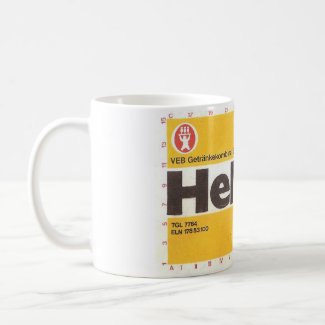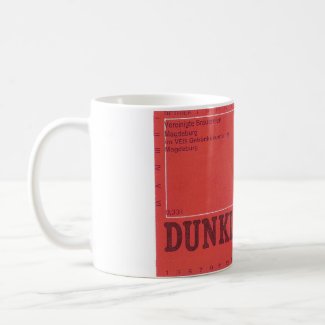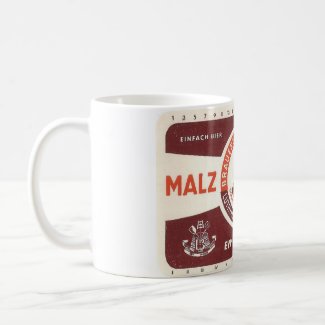20% off all my Lulu print books with this code:
BIGTREAT20
Ends November 1st at 11:59 PM UTC. 
Saturday, 31 October 2020
Discount on my books
Let's Brew - 1942 Truman P1 Bott.
At over 5.5% ABV, it must have been one of the strongest Pale Ales available in the second half of WW II.
What fascinates are the difference in the grist between this and the draught version. It also serves as confirmation of my theory about why Truman suddenly started adding malt extract to their grists.
Because this parti-gyle contained no malt extract. But there was some malt made from Californian barley. I assume that, because of the higher enzyme content of Californian barley extra enzymes from the malt extract weren’t needed. This is very late for US grain to be turning up in UK beer. I’m guessing that they deliberately saved some for this beer.
The hopping rate, however, is the same as for a draught P1 and P2 parti-gyle. Though only hops were used, no hop concentrate as in the draught P1 above. The hops were all English and all from the 1941 harvest.
A pretty decent quantity was brewed in this batch: 287 barrels out of a total parti-gyle of 430 barrels. But P1 Bott was only brewed occasionally, far less often than their other beers.
| 1942 Truman P1 Bott. | ||
| pale malt | 7.75 lb | 71.49% |
| high dried malt | 1.75 lb | 16.14% |
| flaked barley | 0.67 lb | 6.18% |
| No. 1 invert sugar | 0.67 lb | 6.18% |
| Fuggles 90 mins | 0.75 oz | |
| Fuggles 60 mins | 0.50 oz | |
| Goldings 30 mins | 0.50 oz | |
| Goldings dry hops | 0.50 oz | |
| OG | 1051 | |
| FG | 1008 | |
| ABV | 5.69 | |
| Apparent attenuation | 84.31% | |
| IBU | 21 | |
| SRM | 6 | |
| Mash at | 151º F | |
| Sparge at | 160º F | |
| Boil time | 90 minutes | |
| pitching temp | 60º F | |
| Yeast | Wyeast 1028 London Ale (Worthington White Shield) | |
This recipe features in my little book on IPA in WW II.
Friday, 30 October 2020
Racial discimination in wartime London
"22nd Sept.
HOTEL—RACIAL DISCRIMINATION
Replying to questions regarding the exclusion of Mr. L. Constantine, a West Indian cricketer, on the ground of his colour, from the Imperial Hotel, London, Mr. Emrys-Evans (Under-Secretary of State, Dominion Affairs) said : My right hon. Friend (Secretary of State for the Colonies) is aware of the incident referred to in these Questions. It is understood that legal proceedings are pending, and it would therefore be improper for me to comment on the incident itself. The hotel in question is the Imperial Hotel, Russell Square. I am glad, however, to have the opportunity of stating on behalf of my right hon. and gallant Friend that he most strongly condemns any form of racial discrimination against Colonial people in this country.
Mr. Driberg (Maldon, Ind.) asked the Parliamentary Secretary to the Ministry of Food whether he will take over the control and administration of hotels and other catering establishments attempting to impose a colour bar or showing any racial discrimination among their customers ?
Mr. Mahane : No, Sir."
The Brewing Trade Review, October 1943, pages 318 - 319.
Intrigued , I made a quick search of the newspaper archive. Mr. Constantine had booked a room at Imperial Hotel, but when he turned the manager asked him to leave.
This statement from the Home Secretary sounds rather modern.
"23rd Sept.
Replying to further questions on the above subject Mr. H. Morrison (Home Secretary) said : As it is reported that this case may be the subject of legal proceedings, it would not be right for me to express any opinion on the legal aspect of any action taken by the management of the hotel in question, but I am advised that hotels which provide accommodation for travellers are under a common law obligation not to exercise arbitrary discrimination and not to refuse a traveller, for whom accommodation is available, except on some reasonable ground, such as that he is not in a fit state to be received. Apart, however, from any question of law the House will, I am sure, agree with me that there is a responsibility on all members of the community, including not only those who manage hotels and places of public resort but also their clients and guests, to avoid any discrimination against a fellow British subject on grounds of race or colour. If in this case there has been failure to accord to a British subject in this country the full equality of status and treatment to which he is entitled, I would assure him that any such failure is deeply deplored and strongly condemned by responsible public opinion throughout the United Kingdom."
The Brewing Trade Review, October 1943, page 319.
Mr. Constantine won his case, but was only awarded nominal damages of £5 5s. On grounds of the "form in which the action was brought". Otherwise he would have awarded "exemplary and substantial damages". The judge not believing the hotel's claim that Mr. Constantine left voluntarily.
Does this obligation to accept all travellers still exist in the UK?
Almost forgot. One of the reasons I was struck by the case is that I've stayed in the Imperial Hotel. More than once. Though it's been completely rebuilt in the intervening years.
Thursday, 29 October 2020
Dropping fermentation
There seems to have been quite a bit of variation in exactly how long elapsed between pitching and dropping. At some breweries, such as Fullers and Adnams, the wort remained no more than 12 hours in the upper round. At others, it could stay there for two or three days.
Fullers brewing logs recorded the fermentation process in some detail:
| 5th November 1941 Fullers X Ale fermentation | |||
| day and time | temperature | OG | action |
| Wednesday 18:00 | 63º F | 1028.6 | pitched |
| Thursday 03:00 | dropped | ||
| 15:00 | 64º F | 1022.8 | |
| 22:00 | 65.5º F | 1019.2 | |
| Friday 6:30 | lowered sluices | ||
| 08:00 | 68º F | 1013.3 | |
| 14:30 | collected and pumped | ||
| 15:00 | 68º F | 1010.8 | |
| 20:00 | 68º F | 1008.9 | |
| Saturday 8:00 | 67.5º F | 1007.8 | |
| 12:00 | 67º F | 1007.5 | |
| 20:00 | 66.5º F | 1007.5 | |
| Sunday 9:00 | liquor on | ||
| Tuesday 4:30 | 59º F | racked | |
| Source: | |||
| Fullers brewing record held at the brewery. | |||
The fermenting wort was only briefly in the upper round – a mere 9 hours – before being dropped. “Collected” refers to yeast being skimmed off the top for repitching. While “liquor on” is the attemperator being activated.
All in all, the fermentation took around 12 hours short of a full week. Which seems quite a long time for a beer of such a modest gravity.
Wednesday, 28 October 2020
Let's Brew Wednesday - 1888 Thomas Usher 100/-
Usher’s Shilling Ales managed to struggle along until 1918. The old style 100/0. 80/- and 60/- then disappeared forever. With Usher moving over to mostly brewing Pale Ales of varying strengths, with the occasional Stout or Strong Ale.
This example was in a four-way parti-gyle with 80/-, 60/- B and 50/- B. Usher were big fans of parti-gyling, both in the 19th and 20th centuries. They haven’t taken advantage of the Free Mash Tun Act, using only sugar, which had been legal in beer since 1847, and malt.
It really was No. 2 invert this time. That’s not a substitution. Sugars drive me crazy. All those weird initials like CDM, CWA, CDE. It really makes my life difficult.
The hops were Kent from the 1887 crop and Bavarian from 1885.
| 1888 Thomas Usher 100/- | ||
| pale malt | 15.00 lb | 89.55% |
| No. 2 invert sugar | 1.75 lb | 10.45% |
| Hallertau 120 min | 1.50 oz | |
| Goldings 30 min | 1.50 oz | |
| Goldings dry hops | 0.50 oz | |
| OG | 1074 | |
| FG | 1027 | |
| ABV | 6.22 | |
| Apparent attenuation | 63.51% | |
| IBU | 31 | |
| SRM | 9.5 | |
| Mash at | 147º F | |
| Sparge at | 170º F | |
| Boil time | 120 minutes | |
| pitching temp | 58º F | |
| Yeast | WLP028 Edinburgh Ale | |
Tuesday, 27 October 2020
Tacky merchandise time again
For reasons I won't go into, I've be spurred to add some more stuff. DDR-label-based, obviously.
I think I'll get one of these myself.
A lovely one from the town where I was married:
And one for a beer style specific to East Germany:
Buy the whole set and be the envy of your friends!
Fermentation in WW II
In general, though the exact details varied across breweries, fermentation took place between 60º F and 70º F. Very strong beers were often pitched a degree or two cooler, but had a similar maximum temperature.
The exception being, of course, the handful of specialist Lager brewers, like Barclay Perkins. To take them as an example, fermentation were between around 45º F and 55º F.
Despite what you may have been told, Scottish brewers didn’t ferment at near Lager temperatures. As this fermentation record for a William Younger Mild Ale.
| William Younger 6th August 1941 XXX | ||
| heat | OG | |
| pitching | 62º F | 1036 |
| day 1 AM | 65º F | 1030 |
| day 1 PM | 66º F | 1027 |
| day 2 AM | 68º F | 1020 |
| day 2 PM | 69º F | 1018 |
| day 3 AM | 64º F | 1015.5 |
| day 3 PM | 57º F | 1015.5 |
| day 4 AM | 56º F | 1015 |
| day 4 PM | 56º F | 1015 |
| Source: | ||
| William Younger brewing record held at the Scottish Brewing Archive, document number WY/6/1/2/78. | ||
It looks like the wort has been allowed to heat itself for the first two days, before the attemperators were turned to drop the temperature down to 56º F. This is a pretty typical fermentation profile not just for William Younger, but for other Scottish brewers, too.
The process at Barclay Perkins was generally similar, with the yeast pitched at a little over 60º F and hitting a maximum temperature of around 70º FL
| Barclay Perkins 11th April 1941 X Ale | ||
| heat | OG | |
| pitching | 61º F | 1031.6 |
| 12th April 9:30 | 64º F | 1028 |
| 14:25 | 66º F | 1025 |
| 20:25 | 67º F | 1022 |
| 13th April 8:15 | 70º F | 1014.5 |
| 14th April 10:00 | 70º F | 1008 |
| 17th April 11:15 | 59º F | 1008.5 |
| Source: | ||
| Barclay Perkins brewing record held at the London Metropolitan Archives, document number ACC/2305/01/624. | ||
Monday, 26 October 2020
Boiling in WW II
There was considerable variation between breweries in the length of boil and between different beers in the same brewery.
During both wars the government struggled to keep coal output at a sufficient level to meet demand. As things like kettles were generally powered by coal, a shortage of it caused acute difficulties. Even more so in breweries where everything was steam powered.
"The shortage of coal created further difficulties which were often aggravated by its poor quality. This need to conserve coal raised the question of copper boiling, and brewers found they had to reduce their boiling period almost to the limit of safety. It was also often difficult, with the low-quality of coal available in some districts, to maintain a sufficient head of steam on the boilers to obtain a suitable boiling temperature. When the coal situation became difficult brewers were asked to take the necessary steps to conserve fuel as much as possible. The experience of the last war, however, had taught them a lot about the saving of fuel, and its rising price in the intervening years had encouraged efficiency in this direction, so that there were not many improvements that could be carried out. Notwithstanding this they were subjected to frequent visits from inspectors and advisers from the Ministry of Fuel, many of whom knew little more than the theory of fuel consumption."
Journal of the Institute of Brewing Volume 52, Issue 3, May-June, 1946, pages 124 - 125.
Not getting a decent boil could be as problematic as too short a boil. A brewer’s life wasn’t an easy one in wartime.
I have found brewers who did adapt their boiling practices. Whitbread providing a good example of brewery which reduced its boiling times during the war.
| Whitbread Mild Ale 1938 - 1947 | |||||||||||
| Date | Year | Beer | OG | FG | ABV | App. Atten-uation | lbs hops/ qtr | hops lb/brl | boil time (hours) | boil time (hours) | Pitch temp |
| 25th Feb | 1938 | X | 1035.3 | 1010.0 | 3.35 | 71.67% | 7.44 | 1.11 | 1.25 | 1.25 | 65º |
| 26th Sep | 1939 | X | 1033.9 | 1010.5 | 3.10 | 69.03% | 8.27 | 1.11 | 1.25 | 1 | 65º |
| 25th Apr | 1940 | X | 1033.5 | 1008.5 | 3.31 | 74.63% | 8.12 | 1.12 | 1.25 | 1 | 65º |
| 20th Nov | 1940 | XX | 1031.1 | 1010.0 | 2.79 | 67.85% | 8.42 | 1.07 | 1.17 | 0.75 | 66º |
| 10th Oct | 1941 | XX | 1031.2 | 1009.0 | 2.94 | 71.15% | 6.38 | 0.76 | 1.25 | 1.25 | 65º |
| 30th Jan | 1942 | XX | 1029.1 | 1007.5 | 2.86 | 74.23% | 5.84 | 0.75 | 1 | 1 | 65º |
| 30th May | 1942 | XX | 1028.4 | 1007.0 | 2.83 | 75.35% | 6.19 | 0.75 | 1 | 1 | 65º |
| 5th Apr | 1943 | XX | 1027.8 | 1008.0 | 2.62 | 71.22% | 6.07 | 0.76 | 1 | 1.25 | 65º |
| 22nd Feb | 1944 | XX | 1028.5 | 1009.0 | 2.58 | 68.42% | 5.79 | 0.69 | 1 | 0.75 | 65º |
| 4th Apr | 1945 | XX | 1028.2 | 1009.0 | 2.54 | 68.09% | 5.63 | 0.70 | 1 | 0.75 | 65º |
| 12th Sep | 1946 | XX | 1027.3 | 1008.0 | 2.55 | 70.70% | 6.02 | 0.71 | 1 | 1 | 65º |
| 3rd Jan | 1947 | XX | 1027.5 | 1005.5 | 2.91 | 80.00% | 6.02 | 0.68 | 1 | 0.75 | 65º |
| Sources: | |||||||||||
| Whitbread brewing records held at the London Metropolitan Archives, document numbers LMA/4453/D/01/105, LMA/4453/D/01/107, LMA/4453/D/01/108, LMA/4453/D/01/109, LMA/4453/D/01/110, LMA/4453/D/01/111, LMA/4453/D/01/112, LMA/4453/D/01/114. | |||||||||||
At the start of the war, the boil time was already quite short at 85 minutes. The mere 60 minutes to which it fell in 1942 is extremely short. Probably at the limit of safety as mentioned above.
Similar reductions were made at Barclay Perkins, though starting from a somewhat higher level:
| Barclay Perkins XX Mild Ale 1939 - 1947 | |||||||||
| Year | OG | FG | ABV | App. Atten-uation | lbs hops/ qtr | hops lb/brl | boil time (hours) | boil time (hours) | boil time (hours) |
| 1939 | 1042.7 | 1011.5 | 4.13 | 73.08% | 7.00 | 1.18 | 2.5 | 2.25 | 2 |
| 1940 | 1037.7 | 1010.5 | 3.59 | 72.11% | 7.00 | 1.02 | 2 | 1.75 | 1.5 |
| 1941 | 1037.7 | 1009.0 | 3.80 | 76.15% | 4.94 | 0.76 | 1.75 | ||
| 1942 | 1031.4 | 1006.0 | 3.36 | 80.89% | 6.00 | 0.78 | 1.5 | 1.25 | |
| 1943 | 1031.4 | 1008.0 | 3.10 | 74.52% | 7.38 | 1.00 | 1.75 | 1.5 | |
| 1945 | 1031.4 | 1009.5 | 2.90 | 69.75% | 5.49 | 0.71 | 1.5 | 1.5 | |
| 1946 | 1027.6 | 1008.5 | 2.53 | 69.20% | 5.40 | 0.67 | 1.5 | 1.5 | |
| 1947 | 1030.4 | 1008.8 | 2.86 | 71.22% | 7.39 | 0.93 | 1.25 | 1.25 | |
| Sources: | |||||||||
| Barclay Perkins brewing records held at the London Metropolitan Archives, document numbers ACC/2305/01/623, ACC/2305/01/624, ACC/2305/01/625, ACC/2305/01/626 and ACC/2305/01/627. | |||||||||
Over the whole period the length of the boil was about halved.
Sunday, 25 October 2020
Primings
After a few weeks of laziness, I'm seriously attacking my WW II book again. I reassured myself that I was researching. In reality, I was dodging writing certain sections of the book. The ones where a whole load of raw source material requires transformation into a coherent narrative.
And I just couldn't be arsed. Daunted by the minimal intellectual effort required, I sought refuge in transcribing reams of William Younger brewing records and OCR'ing The Brewing Trade Review. Far more time and effort than just cracking on and writing a few thousand words.
That's what happens when you have whatever you call the craziness that goes on in my head. Being lazy entails countless hours of tedious, repetitive labour.
And I would have said, unproductive labour. That ludicrously detailed - and mostly pointless - research. Except, it did throw a few tasty dumplings my way which I might have missed. Had I been less obsessive. (And I do love me a dumpling. I dream of making suet dumplings like my Mum's. How did she get them that fluffy?)
Vaguely amusing bit over. Now the tedious, unedited, book preview. Some of the things what I wroted this week. Enjuyulate.
During the WW II draught beer was almost all in cask form. As it had been for centuries. About the only change to the process since the early 19th century had been the introduction of sugar primings, which really took off at the beginning of the 20th century.
Primings were a sugar solution with an OG of 1140º to 1150º added at racking time with the principal aim of providing readily fermentable material to condition the beer in the cask quickly. Additionally, the primings could also add colour through the presence of caramel.
With as much as a gallon of primings being added per 36-gallon barrel, they could significantly boost the effective OG of a beer by as much as 10%. The increase was especially prominent in low-gravity beers like Mild Ale.
Frustratingly, most breweries didn’t record details of primings in their brewing records. Those few that do, show how sophisticated a procedure had become.
Barclay Perkins primed many of their beers, not just draught ones, but some of the bottled, too. Here’s how it all looked a couple of years into the war:
| Barclay Perkins primings in 1941 | ||||
| Beer | Style | primings (gallons) | OG before primings | OG after ptimings |
| A | Mild | 0.25 | 1028.7 | 1029.5 |
| X | Mild | 0.75 | 1031.8 | 1034.2 |
| XX | Mild | 0.75 | 1037.7 | 1039.9 |
| KK | Burton | 0.5 | 1051.4 | 1052.7 |
| LS draught | Stout | 0.75 | 1040.8 | 1043 |
| LS bottled | Stout | 1 | 1040.8 | 1043.7 |
| IBS | Stout | 0.75 | 1055.6 | 1057.4 |
| Source: | ||||
| Barclay Perkins brewing record held at the London Metropolitan Archives, document number ACC/2305/01/624. | ||||
IBS is Russian Stout. If you're wondering why I've used an image of the Cossack bloke.
Saturday, 24 October 2020
Let's Brew - 1946 Whitbread XXXX
There hadn’t been much of a change in XXXX since the war ended. Which must have been reassuring to drinkers in search of something with some punch.
I assume that this was an exclusively draught beer. Certainly its predecessor, 33, had been. It was popular enough to be economical to brew single-gyle. This batch was of 790 barrels, which is a lot of beer by any reckoning.
Making it all the more surprising that this seems to be the last year it was brewed. At least, I have no later photographs of XXXX brewing records. If I were to guess, I’d say that they dropped it in 1947, when UK beer strengths hit a nadir, and just never bothered bringing it back. Odd, as in the 1950s Burton was a standard draught beer in London, where Whitbread was based.
The grist is unchanged, with the classic combination pale and chocolate malt, flaked barley, No. 3 invert and caramel.
The hops were Mid-Kent Whitbread from the 1945 harvest, Mid-Kent from 1945 and East Kent, also from 1945, plus some Hopulon.
| 1946 Whitbread XXXX | ||
| pale malt | 6.00 lb | 65.50% |
| chocolate malt | 0.33 lb | 3.60% |
| flaked barley | 1.25 lb | 13.65% |
| No. 3 invert sugar | 1.50 lb | 16.38% |
| caramel 1000 SRM | 0.08 lb | 0.87% |
| Fuggles 60 mins | 1.25 oz | |
| Fuggles 30 mins | 0.75 oz | |
| Goldings 30 mins | 0.25 oz | |
| Goldings dry hops | 0.50 oz | |
| OG | 1043.5 | |
| FG | 1010 | |
| ABV | 4.43 | |
| Apparent attenuation | 77.01% | |
| IBU | 28 | |
| SRM | 22 | |
| Mash at | 149º F | |
| After underlet | 154º F | |
| Sparge at | 168º F | |
| Boil time | 60 minutes | |
| pitching temp | 62º F | |
| Yeast | Wyeast 1099 Whitbread Ale | |
Friday, 23 October 2020
Underlet mashing
A widespread method was underlet mashing. A technique that was developed in the last half of the 19th century and remained popular way past WW II. It wasn’t as common in Scotland as in England, but it was still practised north of the border, for example at Maclay.
After an initial mash at quite a low temperature, 30 minutes later, more hot water was added via the underlet, i.e. from the bottom of the mash tun. The internal rakes were given a couple of spins to mix the new water through the mash. The underlet water was at a hotter temperature than the striking heat and raise the temperature of the goods. In effect it’s a step mash.
After standing for 120 minutes or so, the wort was run off and there were one or two sparges. The exact details varied from brewery to brewery. Because of the need to stir the mash after the underlet, brewers had to have rakes fitted to their tuns.
There was an explanation for using the method other than improving extract.
“Underletting was not brought into favour merely as assisting in obtaining full extract, but by mashing at a lower initial temperature and then bringing the goods heat up to a high temperature by underlet, it was thought to obtain a wort of more desirable carbohydrate composition for certain classes of beer. There is some reason to think that a sweeter beer was thus obtained. But apart from carbohydrate composition due to controlled diastatic action, there is the question of proteolytic action being more effective at the lower initial temperature and so affecting the nitrogenous composition of the wort favourably. Many experiments have shown that 148°-150° is the temperature at which proteolytic action in the mash tun is inhibited, but at 144 -145º it is positive so that 20 minutes to half an hour at this lower figure might have a very desirable effect in reducing the amount of those bodies which are potentially troublesome in bottled beers. Moreover when an underlet is to be used the mash is generally thicker and in a thick mash proteolytic action is said to be a little stronger.”
The Brewing Trade Review, October 1943, page 309.
I won’t pretend to understand the science there. It does seem underletting influenced the character of the finished beer. If you believe the scienticians.
Here’s a typical underlet mash schedule from my favourite London brewery. It was for a total grain weight of 9,408 lbs.:
| 1941 Barclay Perkins A and X Ale underlet mash | |||
| action | water (barrels) | water heat | goods heat |
| mash | 56 | 154º F | 147º F |
| underket after 30 mins | 14 | 180º F | 151º F |
| sparge | 102 | 165º F | 154º F |
| Source: | |||
| Barclay Perkins brewing record held at the London Metropolitan Archives, document number ACC/2305/01/624. | |||



























































































